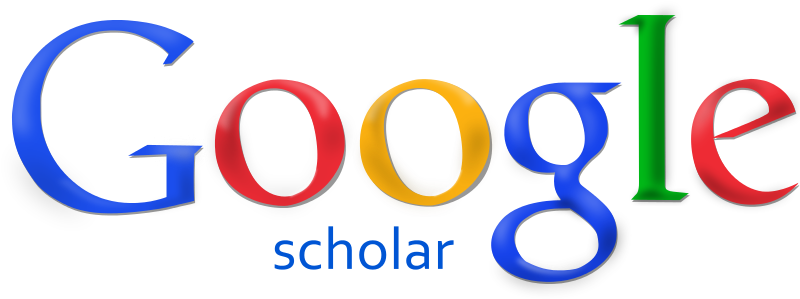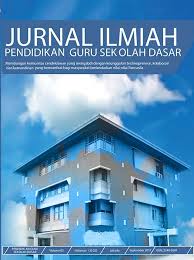MODEL PEMBELAJARAN KREATIF PARTISIPATIF
Abstract
Keywords
Full Text:
PDFReferences
Craft, A. (2005) Creativity in Schools: tensions and dilemmas. London:
Routledge.http://dx.doi.org/10.4324/9780203357965
Cropley, A.J. (2001) Creativity in Education and Learning: a guide for teachers and educators. London: Routledge.
J. Wisdom (Eds) Developing Creativity in Higher Education: an imaginative curriculum, pp. xviii-xx. London: Routledge.
Fasko, D.Jr. (2000-01) Education and Creativity, Creativity Research Journal, 13(3-4), 317-327. Guilford, J.P. (1950) Creativity, American Psychologist, 5, 444-454. http://dx.doi.org/10.1037/h0063487
Hennessey, B.A. & Amabile, T.M. (1987). Creativity and Learning. Washington, DC: NEA Professional Library.
Ingold, T. (2013). Making. London: Routledge.
Ingold, T. & Hallam, E. (2007) Creativity and Cultural Improvisation: an introduction, in E. Hallam & T. Ingold (Eds) Creativity and Cultural Improvisation, pp. 1-24. Oxford: 123 Berg.
Henry, J. (2001). Creativity and Perception in Management. SAGE Publisher .ltd. Joas, H. (1996) The Creativity of Action. Cambridge: Polity Press.
Joas, H., Sennett, R. & Gimmler, A. (2006). Creativity, Pragmatism and the Social Sciences, Distinktion, 7(13), 5-31. http://dx.doi.org/10.1080/1600910X.2006.9672927.
Joas, H. & Knôbl, W. (2009) Social Theory: twenty introductory lectures. New York: Cambridge University Press.
Lave, J. & Wenger, E. (1991) Situated Learning: legitimate peripheral
participation. New York: Cambridge UniversityPress. http://dx.doi.org/10.1017/CBO9780511815355
Levin, C. (2008) Creativity in the School Context. Lund: Lund University.
Linge, A. (2013) Svängrum: för en kreativ musikpedagogik. Malmö Högskola.
Morris, M., & Leung, K. (2010). Creativity East and West: Perspectives and Parallels. Management and Organization Review, 6(3), 313-327.
doi:10.1111/j.17408784.2010.00193
Mumford, M.D. (2003) Where Have We Been, where Are We Going? Taking Stock in Creativity Research, Creativity Research Journal, 15(2-3), 107-120.
Nussbaum, M.C. (2010) Not for Profit: why democracy needs the humanities. Princeton, NJ: Princeton University Press.
Peters, M. A. (2010) Three Forms of the Knowledge Economy: learning, creativity and openness, British Journal of Educational Studies, 58(1), 67-88. http://dx.doi.org/10.1080/00071000903516452
Pope, R. (2005) Creativity: theory, history, practice. Abingdon: Routledge. Rhodes, M. (1961). An Analysis of Creativity. The Phi Delta Kappan, 305-310. Retrieved June 18, 2020, from www.jstor.org/stable/20342603
Sawyer, K. (2012) Explaining Creativity: the science of human innovation. Oxford: Oxford University Press.
Shao, Y., Zhang, C., Zhou, J., Gu, T., & Yuan, Y. (2019). How Does Culture Shape Creativity? A Mini-Review. Frontiers in Psychology, 10, 12-19. doi:10.3389/fpsyg.2019.01219
Simonton, D.K. (2013) Teaching Creativity: current findings, trends, and controversies in the psychology of creativity, Teaching of
Psychology, 39, 217. http://dx.doi.org/10.1177/0098628312450444
Sternberg, R. J. (2006) The Nature of Creativity, Creativity Research Journal, 18(1), 87-98. http://dx.doi.org/10.1207/s15326934crj1801_10
Tabrani, P. (2015). Pendidikan Seni, Hubungannya Dengan Ambang
Sadar,. Wimba, Jurnal Komunikasi Visual & Multimedia. Vol. 7 No. 1
Tahun, 1-18.
Tanggaard, L. (2007) Boundary Crossing between School and Work, Journal of Education and Work, 20(5), 453-466. http://dx.doi.org/10.1080/13639080701814414
Tanggaard, L. (2008) Kreativitet skal læres – når talent bliver til innovation. [Creativity and learning : when talent turns into innovation]. Aalborg: Aalborg Universitetsforlag.
Tanggaard, L. (2011) Stories about Creative Teaching and Productive Learning, European Journal of Teacher Education. 34(2), 217-230.
http://dx.doi.org/10.1080/02619768.2011.558078
Tanggaard, L. (2013) The Socio-materiality of Creativity, Culture and Psychology, 19(1), 20-32.http://dx.doi.org/10.1177/1354067X12464987
Tanggaard, L. & Elmholdt, C. (2008). Assessment in Practice: an inspiration from apprenticeship. I, Scandinavian Journal of Educational Research, 52 (1), 97-116.
http://dx.doi.org/10.1080/00313830701786719
Tanggaard, L. & Stadil, C. (2012) I bad med Picasso: sådan bliver du mere kreativ. Copenhagen: Gyldendal. Torrance, E.P. (1972) Can we Teach Children to Think Creatively? Journal of Creative Behaviour,
, 114-143. http://dx.doi.org/10.1002/j.2162-6057.1972.tb00923.x
Wegener, C. & Tanggaard, L. (2013) The Concept of Innovation as Perceived by Public Sector Frontline Staff: outline of a tripartite empirical model of innovation, Studies in Continuing Education, 35(1), 82-101.
http://dx.doi.org/10.1080/0158037X.2012.707123
Zeng, L., Proctor, R.W. & Salvendy, G. (2011) Can Traditional Divergent Thinking Tests be Trusted in Measuring and Predicting Real-world Creativity? Creativity Research Journal, 23(1), 24-37.
http://dx.doi.org/10.1080/10400419.2011.545713
DOI: https://doi.org/10.31326/jipgsd.v6i2.1465
Refbacks
- There are currently no refbacks.

This work is licensed under a Creative Commons Attribution-ShareAlike 4.0 International License.





